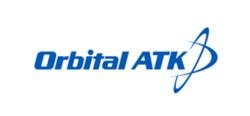Tue, Jan 19, 2016
3D-Printed Unit Demonstrates One Of Longest Duration Propulsion Wind Tunnel Tests On Record
Orbital ATK has successfully tested a 3D-printed hypersonic engine combustor at NASA Langley Research Center. The combustor, produced through an additive manufacturing process known as powder bed fusion (PBF), was subjected to a variety of high-temperature hypersonic flight conditions over the course of 20 days, including one of the longest duration propulsion wind tunnel tests ever recorded for a unit of this kind. Analysis confirms the unit met or exceeded all of the test requirements.

One of the most challenging parts of the propulsion system, a scramjet combustor, houses and maintains stable combustion within an extremely volatile environment. The tests were, in part, to ensure that the PBF-produced part would be robust enough to meet mission objectives.
“Additive manufacturing opens up new possibilities for our designers and engineers,” said Pat Nolan, Vice President and General Manager of Orbital ATK’s Missile Products division of the Defense Systems Group. “This combustor is a great example of a component that was impossible to build just a few years ago. This successful test will encourage our engineers to continue to explore new designs and use these innovative tools to lower costs and decrease manufacturing time.”
The test at Langley was an important opportunity to challenge Orbital ATK’s new combustor design, made possible only through the additive manufacturing process. Complex geometries and assemblies that once required multiple components can be simplified to a single, more cost-effective assembly. However, since the components are built one layer at a time, it is now possible to design features and integrated components that could not be easily cast or otherwise machined.
PBF is one of several manufacturing methods currently being explored by Orbital ATK and its technology partners. Final assembly of the test combustor was completed at the company’s facilities in Ronkonkoma, New York, and Allegany Ballistics Laboratory in Rocket Center, West Virginia.
Orbital ATK’s Defense Systems Group is an industry leader in providing innovative and affordable precision and strike weapons, advanced propulsion and hypersonics, missile components across air-, sea- and land-based systems, ammunition and related energetic products.
(Source: Orbital ATK news release)
More News
How To Get A Story On Aero-TV News/Feature Programming How do I submit a story idea or lead to Aero-TV? If you would like to submit a story idea or lead, please contact Jim Campbel>[...]
Aero Linx: International Association of Professional Gyroplane Training (IAPGT) We are an Association of people who fly, build or regulate Gyroplanes, who have a dream of a single >[...]
NORDO (No Radio) Aircraft that cannot or do not communicate by radio when radio communication is required are referred to as “NORDO.”>[...]
Also: uAvionix AV-Link, F-16 Viper Demo, TN National Guard, 'Staff the Towers' A Saturday afternoon jump run, originating from SkyDive Kansas City, went bad when it was reported th>[...]
Beyond Visual Line Of Sight (BVLOS) The operation of a UAS beyond the visual capability of the flight crew members (i.e., remote pilot in command [RPIC], the person manipulating th>[...]
 ANN FAQ: Contributing To Aero-TV
ANN FAQ: Contributing To Aero-TV ANN's Daily Aero-Linx (05.29.24)
ANN's Daily Aero-Linx (05.29.24) ANN's Daily Aero-Term (05.29.24): NORDO (No Radio)
ANN's Daily Aero-Term (05.29.24): NORDO (No Radio) Airborne 05.28.24: Jump Plane Down, Starship's 4th, Vision Jet Problems
Airborne 05.28.24: Jump Plane Down, Starship's 4th, Vision Jet Problems ANN's Daily Aero-Term (05.30.24): Beyond Visual Line Of Sight (BVLOS)
ANN's Daily Aero-Term (05.30.24): Beyond Visual Line Of Sight (BVLOS)



